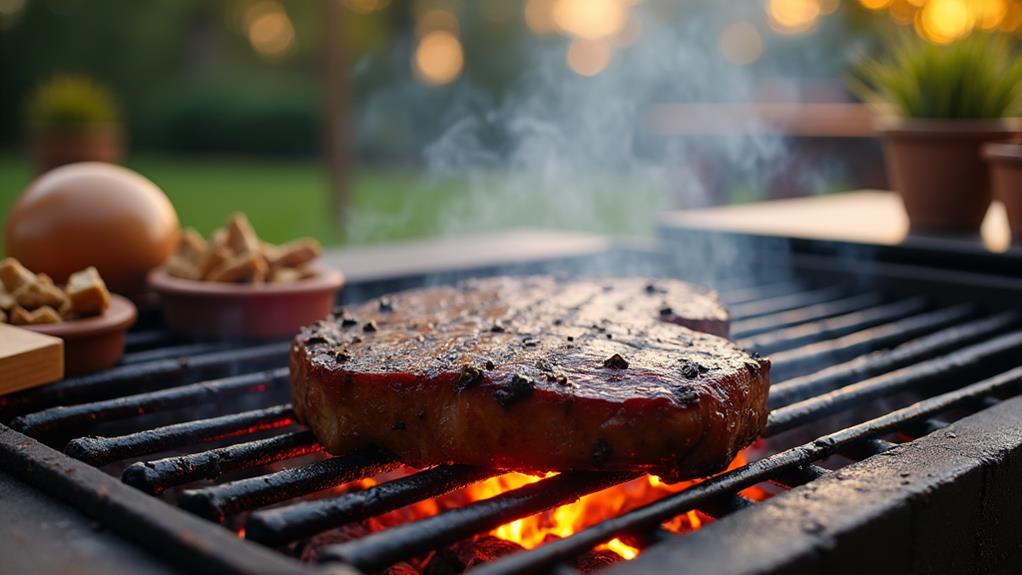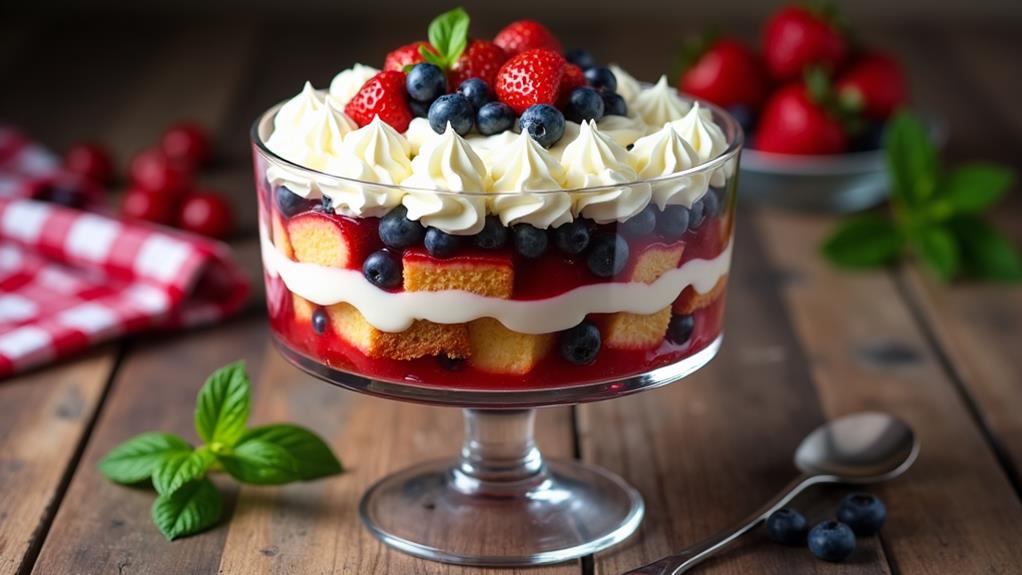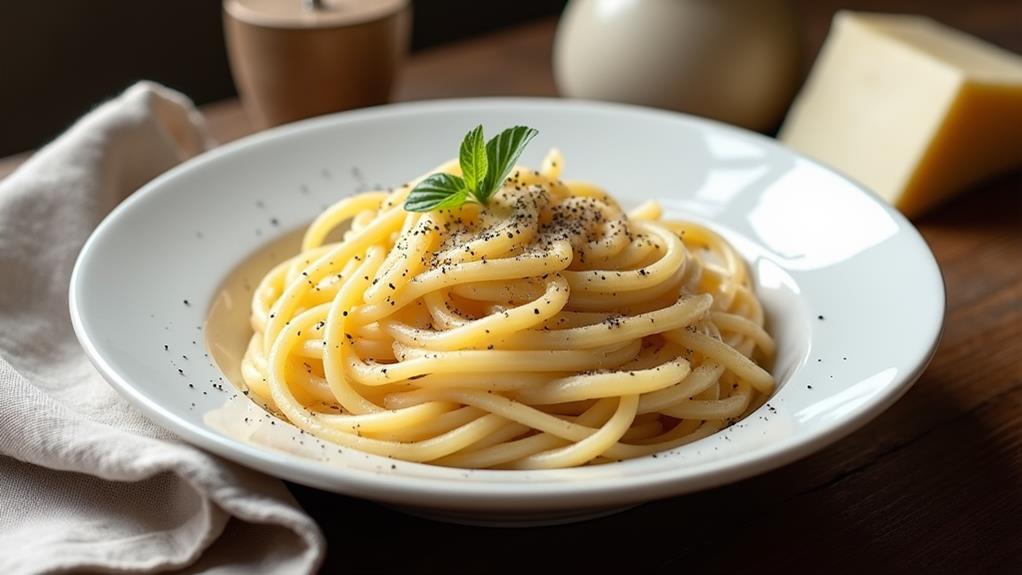To master smoky flavor in grilling, start by selecting the right smoker and understanding fuel options. Choose high-quality cuts with good marbling, and prepare them with dry rubs or marinades. Wood selection is crucial; match wood types to your meat for optimal flavor profiles. Maintain low temperatures between 225°F and 250°F for the best results, using a two-zone fire setup for temperature control. Monitor smoke density, aiming for thin, blue smoke rather than thick, white clouds. Pay attention to visual cues like color changes and moisture levels. As you explore these techniques, you'll uncover the secrets to achieving grilling perfection.
Selecting the Perfect Smoker Grill
When it comes to selecting the perfect smoker grill, you'll want to consider a few key factors. First, familiarize yourself with the various smoker types available. Options include offset smokers, vertical smokers, pellet smokers, and kamado grills. Each type offers unique benefits, so research their features to find the one that aligns with your cooking style and space constraints.
Next, evaluate the fuel options. You'll find smokers that use charcoal, wood, pellets, or gas as their primary fuel source. Consider the flavor profiles each fuel imparts and the level of effort you're willing to invest in maintaining temperature control. Charcoal and wood provide authentic smoky flavors but require more attention, while pellet and gas smokers offer convenience and consistent temperatures.
Size matters too. Think about how many people you'll typically cook for and choose a smoker with appropriate capacity. Don't forget to factor in your available outdoor space and portability needs.
Lastly, consider build quality and insulation. A well-constructed smoker with efficient heat retention will ensure consistent cooking temperatures and fuel efficiency, elevating your smoking game to new heights.
Preparing Meat for Smoking Success
To achieve smoking success, you'll need to start with the right cuts of meat and prepare them properly.
Choose cuts with ample marbling and connective tissue, such as brisket, pork shoulder, or ribs, which become tender and flavorful during the slow smoking process.
Before smoking, trim excess fat, apply a dry rub or brine, and allow the meat to come to room temperature, ensuring even cooking and maximum flavor absorption.
Selecting the Right Cuts
Three key factors determine the success of your smoked meat: cut selection, preparation, and technique. When it comes to selecting the right cuts for smoking, you'll want to focus on cuts that benefit from long, slow cooking. The importance of marbling can't be overstated; those beautiful streaks of fat will render during the smoking process, keeping your meat moist and flavorful.
For beef, consider brisket, chuck roast, or ribeye. Pork lovers should opt for shoulder (Boston butt), spare ribs, or belly. If you're smoking poultry, whole chickens or turkey breasts are excellent choices.
Don't overlook less common options like lamb shoulder or duck breast for unique flavor profiles.
Cut selection is crucial for innovation in your smoking endeavors. Experiment with different thicknesses and sizes to achieve varied textures and flavors.
Proper Meat Preparation Techniques
Now that you've chosen the perfect cut, it's time to prepare your meat for smoking success. Your preparation techniques will significantly impact the final flavor and texture of your smoked masterpiece.
Start by trimming excess fat, leaving just enough to enhance flavor and moisture. Consider using a flavorful glaze similar to the honey mustard approach used in honey mustard chicken thighs, which combines sweetness and tanginess for incredible depth.
Next, consider innovative marinade methods to infuse your meat with unique flavors. Experiment with unconventional ingredients like coffee, fruit juices, or even bourbon to create signature taste profiles.
For tougher cuts, focus on meat tenderization techniques. Try using a meat mallet to break down connective tissues, or employ enzymatic tenderizers like papaya or pineapple juice. For a cutting-edge approach, consider sous vide cooking before smoking to achieve optimal tenderness.
Don't forget the importance of dry rubs; create your own blend of spices to complement your chosen marinade. Apply the rub generously, ensuring even coverage for consistent flavor throughout.
Mastering the Art of Wood

Selecting the right wood is crucial for achieving that perfect smoky flavor in your grilled dishes. Different wood types offer unique smoke profiles, enhancing your culinary creations in distinct ways. To master the art of wood selection, start by familiarizing yourself with popular options like hickory, mesquite, apple, and cherry.
Hickory imparts a strong, bacon-like flavor ideal for red meats, while mesquite delivers an intense, earthy taste perfect for beef and game. For a milder touch, opt for fruitwoods like apple or cherry, which complement poultry and pork beautifully. Experiment with blending wood types to create custom flavor profiles that'll elevate your grilling game.
When using wood, ensure it's properly seasoned to avoid bitter tastes and excessive smoke. Soak your wood chips or chunks in water for at least 30 minutes before use to promote slower burning and consistent smoke production.
As you become more adept, try incorporating wood planks for infusing delicate foods like fish with subtle smoky notes. Remember, less is often more when it comes to smoke – aim for a delicate balance that enhances rather than overpowers your food's natural flavors.
Temperature Control Techniques
Mastering temperature control is essential for achieving grilling perfection. To elevate your grilling game, you'll need to understand how different charcoal types affect heat distribution and smoke production. Lump charcoal burns hotter and faster, ideal for searing, while briquettes provide steady, long-lasting heat for slow-cooking. Experiment with both to find your preferred balance.
To achieve that coveted smoke ring, maintain a consistent low temperature between 225°F and 250°F. Use a two-zone fire setup, with hot coals on one side and an empty space on the other. This allows you to move food around for precise temperature control. Invest in a reliable digital thermometer to monitor both grill and meat temperatures accurately.
For innovative temperature management, try the snake method for charcoal arrangement. This technique involves placing a curved line of briquettes around the grill's perimeter, lighting one end, and allowing it to burn slowly. This method provides extended, steady heat for longer cooking sessions.
Monitoring Your Smoked Masterpiece
After mastering temperature control techniques, you'll need to focus on monitoring your smoked masterpiece throughout the cooking process.
You'll want to keep a close eye on smoke density, ensuring it's consistent and not too thick or thin, which can significantly impact flavor.
Additionally, create a visual cues checklist to track changes in your food's appearance, such as color development and moisture levels, helping you gauge doneness and overall quality.
Temperature Control Techniques
Precise temperature control is the key to smoking success. You'll need to master heat distribution to achieve those coveted smoke rings and perfectly tender meat. Start by understanding your smoker's hot spots and cold zones.
Use a dual-probe thermometer to monitor both the smoker's ambient temperature and your food's internal temperature simultaneously. This allows you to make real-time adjustments for consistent results.
To maintain steady temperatures, experiment with vent positioning. Open vents increase airflow and heat, while closing them reduces both. Don't be afraid to adjust your fire as needed; adding small amounts of fuel regularly is better than large additions that cause temperature spikes.
For gas or electric smokers, learn to fine-tune the controls for optimal performance. Consider using water pans to help stabilize temperatures and add moisture to your smoking environment. This can prevent your meat from drying out during long smoking sessions.
Smoke Density Assessment
While temperature control sets the stage, smoke density plays the leading role in your barbecue performance. Assessing smoke density is crucial for achieving that perfect smoke infusion and developing a mouthwatering smoke ring. You'll need to master the art of monitoring your smoker's output to create the ideal smoky flavor profile.
Start by observing the color of the smoke. Thin, blue smoke is your goal, indicating clean combustion and optimal flavor transfer. Thick, white smoke often signals incomplete burning and can impart bitter tastes. To achieve the right density, adjust your air intake vents. Opening them wider increases airflow, promoting cleaner smoke, while closing them slightly reduces oxygen, potentially thickening the smoke.
Next, pay attention to the smoke's consistency. Steady, wispy tendrils are ideal, while billowing clouds suggest over-smoking. Use your senses to gauge the intensity; if your eyes water or the smell becomes overwhelming, it's time to reduce the smoke.
Visual Cues Checklist
Visual cues provide essential feedback when monitoring your smoked masterpiece. As you embark on your grilling journey, it's crucial to develop a keen eye for these telltale signs of progress.
First, observe the color of the smoke. Initially, you'll see thick, white billows, but as the process continues, it should transition to a thin, blue haze. This shift indicates that your wood is burning cleanly, imparting that coveted smoky aroma without bitter overtones.
Next, focus on the meat's surface. You'll notice a gradual darkening as the smoke interacts with the proteins, creating a beautiful bark. This outer layer not only enhances visual appeal but also locks in moisture and concentrates flavor. Watch for a deep mahogany color, which signals optimal smoke absorption.
Pay attention to the fat rendering. As the heat works its magic, you'll see droplets of melted fat glistening on the surface. This indicates that the internal temperature is rising, tenderizing the meat from within.
Flavor Enhancers and Finishing Touches
How can you elevate your grilled dishes from good to outstanding? It's all about mastering the art of flavor enhancement and finishing touches. Let's dive into some seasoning secrets and marinade magic that'll transform your grilling game.
First, elevate your marinades by experimenting with unexpected ingredients. Try incorporating:
- Fruit juices for natural sweetness and tenderizing enzymes
- Craft beers for complex, malty undertones
- Exotic spices like sumac or za'atar for a unique flavor profile.
A perfect complement to grilled meats can be found in dishes like Sweet Potato and Black Bean Tacos, which showcase the benefit of combining sweet and savory flavors.
Next, don't underestimate the power of dry rubs. Create your signature blend by combining salt, sugar, and aromatic spices.
Apply generously before grilling to form a flavorful crust.
Frequently Asked Questions
How Do I Clean and Maintain My Smoker Grill?
To keep your smoker in top shape, embrace innovative cleaning tips. You'll want to regularly brush grates, empty ash, and oil metal surfaces. Don't forget to check for rust and seal leaks. Smoker maintenance ensures peak performance.
Can I Use a Smoker Grill Indoors or on a Balcony?
You shouldn't use smoker grills indoors or on balconies due to safety concerns and inadequate ventilation. Instead, innovate your indoor smoking technique with specialized electric smokers designed for indoor use, ensuring proper ventilation and following manufacturer guidelines.
What's the Best Way to Store Leftover Smoked Meats?
Seal in the smoky essence, lock in the juicy goodness. You'll preserve flavor and extend shelf life by vacuum sealing your leftover smoked meats. For innovative storage, try portioning before sealing—it's a game-changer for quick, flavorful meals later.
Are There Health Concerns Associated With Eating Smoked Foods Regularly?
You should be aware of potential health risks associated with frequent consumption of smoked foods. Some smoking methods can produce harmful compounds. However, you can innovate by exploring healthier smoking techniques or moderating your intake to balance flavor and wellness.
How Can I Adapt Smoking Techniques for Vegetarian or Vegan Options?
Ah, you're finally considering smoking something other than your neighbor's cat! Embrace innovation by smoking vegetables like eggplant or mushrooms. Create smoky marinades with liquid smoke. You'll revolutionize your vegan BBQs and impress even the most carnivorous guests.
Final Thoughts
You've now mastered the essentials of smoky flavor and grilling perfection. Can you already smell the mouthwatering aroma of your next barbecue masterpiece? Remember, selecting the right smoker, preparing your meat, choosing wood wisely, controlling temperature, and monitoring your creation are key to success. Don't forget to experiment with flavor enhancers and finishing touches to truly elevate your dishes. With practice and patience, you'll soon be impressing friends and family with your newfound grilling expertise.















